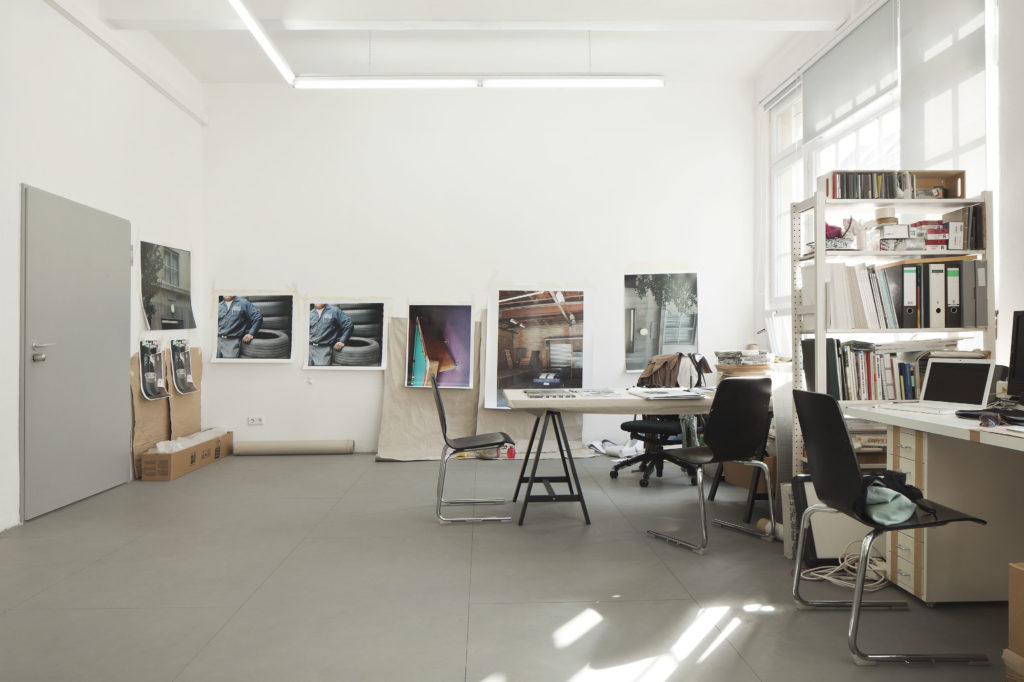Analysis
The Gray Market: Why Galleries Shouldn’t Sell Primarily to Museums (and Other Insights)
This week, our columnist considers the financial uncertainties faced by gallerists, artists, and museums.

This week, our columnist considers the financial uncertainties faced by gallerists, artists, and museums.

Tim Schneider

Every Monday morning, artnet News brings you The Gray Market. The column decodes important stories from the previous week—and offers unparalleled insight into the inner workings of the art industry in the process.
This week, stories about financial uncertainties for gallerists, artists, and museums alike…
SWISS MISS: On Tuesday, my colleague Henri Neuendorf interviewed Jean-Claude Freymond-Guth, the midlevel Swiss gallerist who announced the closure of his namesake space in Basel less than a week earlier. But while Freymond-Guth used the opportunity to make multiple valid points about the polarized structure of the industry—most of them expansions on his much-discussed farewell-letter-turned-industry critique—he also may have revealed at least one entirely avoidable flaw in his business plan.
In the course of denying the idea that his gallery previously sustained itself via secondary-market sales, Freymond-Guth mentioned that he and his staff were “in a very privileged situation where we [sold] mainly to institutions”—a process in which “the negotiations take months and months.” In fact, as other experienced dealers could attest, “months and months” can sometimes extend to a year or more, depending on the stature (and budgets) of the players involved.
And yet, this is exactly why selling “mainly to institutions” would be like siring a brood of children mainly to staff your own business: The day the plan finally matures, you’ve probably already blown far too much time and money for it to pay off. At least, that is, if you’re a midlevel gallery not also aggressively marketing your pending museum acquisitions to collectors from the moment talks become serious.
The reality is that major institutional acquisitions and exhibitions are often more valuable to dealers as a whisper campaign than as a confirmed public announcement. Why? Because the rumors allow business-savvy dealers to set what Magnolia “Seduce & Destroyer” Frank TJ Mackie would call jealousy traps. It’s about letting private clients know—only in strictest confidence, of course—that even though there’s a tidal wave of interest roaring toward shore, there’s still a fleeting opportunity to swoop in and snatch up these undervalued assets before prices rise and the competition sweeps it all away.
If Freymond-Guth is telling the full truth about having sold “mainly to institutions” during his gallery’s lifetime, then he definitely deserves credit for working with multiple artists deemed culturally significant enough to warrant consistent attention from acquisitions committees. At the same time, from a broader sales standpoint, prioritizing the museum market over the private one means mistaking the appetizer for the entree. And that shouldn’t be overlooked when assessing why any gallery with this mindset could go hungry. [artnet News]

Artist studio at Künstlerhaus Bethanien, Berlin. Photo ©Georg Schroeder/Künstlerhaus Bethanien.
CITIES IN THE FOG: Also on Tuesday, Andrew Nunes attempted to compare the live/work costs confronting emerging artists in three industry hubs: New York, Los Angeles, and Berlin. But while his analysis offers some legit illumination, I think the brighter light comes from the friction in the data rather than the data itself.
In Nunes’s defense, let’s keep in mind that this wasn’t a year-long or book-length study. It was only a blog post—one primarily compiled from interviewing 11 artists total across the chosen metro troika. And I expect that the author would agree that the supplementary information he pulled in from other sources isn’t enough to create a truly comprehensive view of studio life in these cities.
All that said, if you’re hoping for a rigorous macro picture of the issue, you’ll have to look elsewhere. Because a hard look at Nunes’s methodology reveals more uncontrolled variables’ charging through the numbers than buzzed minors’ charging out the back door of a house party when the host’s parents get home early.
Practically every artist in the sample seems to have a unique lifestyle in comparison to the others. Some live and work alone; others partner up in a business sense, a romantic sense, or both. Some have home studios; others have separate studios; still others have no studios at all. Some offset their art practice with side jobs to defray the costs, making the local availability of said jobs a factor; others don’t, rendering that element irrelevant. And Nunes either never addresses or mentions only in passing significant factors like healthcare premiums, supply costs, taxes, and others.
At the same time, I also think the noise in the data amplifies a larger point: It’s probably impossible to generate a truly 1:1 comparison between strivers in these disparate cities. Each locale boasts its own distinct set of pros and cons for sub-superstar artists. Which in turn means that the data may only ever be able to provide individual test cases—or perhaps a limited set of statistical profiles—for living/working in one versus the other.
There’s no shame in that, or in Nunes’s attempt to at least sketch out the overall picture. But the complexity of home and studio economics is just one more reason that building a life as an artist anywhere is such a colossal exercise in the unknown. [Artsy]

Glyfford Still Museum in Denver, Colorado. Photo Trueshow111, courtesy Wikimedia Commons.
STILL TO BE DETERMINED: Finally this week, the Clyfford Still Museum announced that on September 20, the lion’s share of the prolific artist’s work will be made available for free consumption online. But while I thunderously applaud this move, let’s also be conscious of what it means and doesn’t mean for the museum.
First, the summary: The institution has prepared high-resolution digital images of roughly 450 out of Still’s 800 paintings, 1,750 out of his 2,300 drawings, and an unspecified number of his watercolors and pastels—all of them soon to be accessible to all comers with a web browser. A bevy of archival material will also be viewable, further expanding Still’s digital footprint.
A contingent of traditionalists may fear that this deluge of digitized resources could discourage in-person attendance. Why journey to see the works on site when you can click through them from the comfort of your home, office, or hovel, they ask, especially if you’re a millennial or whatever regrettable label we apply to the next generation after them?
Yet, I think that concern is about as credible as a spam-folder fortune-splitting offer from a supposed Nigerian prince. Some museums that have been most generous with their digital resources have also seen their largesse coexist with record attendance. Just consider that in February, the Met, which hit an all-time high of seven million visitors last year, decided to go open access with online images of the 375,000 public-domain pieces in its collection. The Smithsonian Institution is multiple years into its own massive push, and a recent report by the Themed Entertainment Association and engineering firm AECOM found that three Smithsonian sites cracked the top 10 in museum visitor figures worldwide last year.
The caveat, however, is that unlike a toll booth, drastically more traffic does not necessarily translate into drastically more revenue for institutions. An annual study by the Association of Art Museum Directors found that admission accounted for just six percent of revenue by its constituent institutions in 2016, with another six percent coming from individual and family membership fees. And as a reminder, even those modest numbers are skewed by the outsize returns of big-brand museums in tourism centers like New York and Los Angeles.
Could the Clyfford Still Museum’s digital initiative meaningfully boost its finances, then? Or is it strictly a boon for scholarship and awareness? Institutions are still extremely early in the process of developing far-reaching online strategies—so early, I think, that it’s impossible to assess the direct revenue benefits of the few that exist.
In the immediate term, that makes these strategies definite costs with indefinite payoffs. But instead of seeing them as follies, I think these campaigns are braver, more interesting, and possibly more lucrative as a result—especially in the context of an increasingly cash-strapped sector of the art industry. Here’s hoping the benefits soon become as tangible and fiscally oriented as they already are scholarly and audience-oriented, for the Still Museum and any other institution willing to innovate for the greater good. [The New York Times]
That’s all for this edition. Til next time, remember Winston Churchill: If you’re going through Hell, keep going.